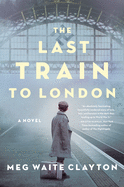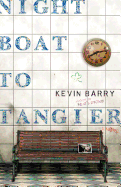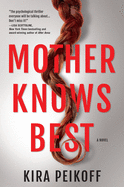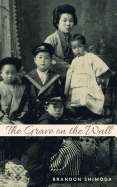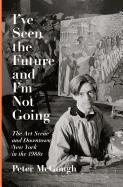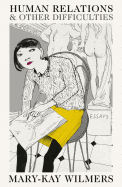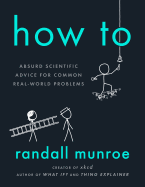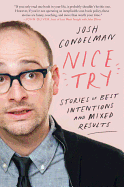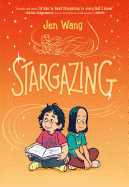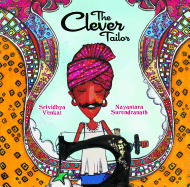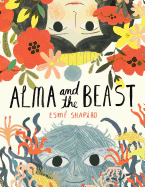 |
| R.L. Stine |
|
 |
| Mackenzi Lee |
|
R.L. Stine is one of the bestselling children's authors in history--his Goosebumps and Fear Street series have sold more than 400 million copies around the world and have been translated into 32 languages. Several TV series have been based on his work, as well as two feature films, Goosebumps (2015) and Goosebumps 2: Haunted Halloween (2018), starring Jack Black. Stine lives in New York City with his wife, Jane, an editor and publisher.
Mackenzi Lee holds a BA in history and an MFA in writing for children and young adults from Simmons College. She is the author of the bestselling historical fantasy novels This Monstrous Thing, The Gentleman's Guide to Vice and Virtue (which won a 2018 Stonewall Honor Award and was a Shelf Awareness Best Book) and its sequel, The Lady's Guide to Petticoats and Piracy. When not writing, Lee works as an independent bookseller, drinks too much Diet Coke and romps with her Saint Bernard, Queenie.
Here, Lee, whose YA novelization of Marvel's Loki in Loki: Where Mischief Lies was just published by Disney, chats with Stine about the Just Beyond series, his first original graphic novels, now available from Boom! Studios.
Mackenzi Lee: I'm so happy to be talking to you. Your books are legendary--as I'm sure you know.
R.L. Stine: Well, thank you.
Lee: So, my first question is, did you always want to be a writer?
Stine: I was this weird kid. I dragged a typewriter into my room and started typing all kinds of stories, joke books and little magazines. I would stay in my room for hours. My mother would stand outside my door and say, "What's wrong with you? Go outside and play!" and I'd say, "It's boring out there."
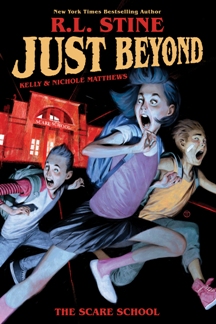 Lee: We were all weird kids. I think that's why we're writers now.
Lee: We were all weird kids. I think that's why we're writers now.
Stine: Well, to be serious, I was a very fearful kid. I was afraid of a lot of things and very shy. So I think it was comforting. It was a great escape to be in my room creating all this stuff.
Lee: If you were a fearful kid, were you into horror? Or did the interest in writing horror come later?
Stine: Everything I wrote was funny. But when I was a kid there were these horror comics, Tales from the Crypt and The Vault of Horror. I loved them partly because the art was so amazing! I was a big comic book freak. They were gruesome, horrible, bloody stories and they all had a funny twist. I just loved that. They were very influential on me back then.
Lee: And now you're writing this original graphic novel series, Just Beyond. How is the process different than writing prose?
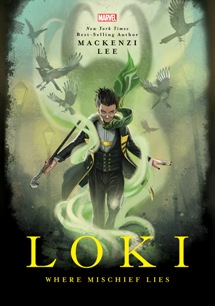 Stine: I'm having fun doing something different. It's a lot like script writing, which I've done. I'm not good at description. I don't have the writer's eye for describing things. When you write a comic book, you don't have to describe much. It's all dialogue. You can give art direction and say, "You flew across the room," then the artist has to figure out what the room looks like. It's kind of a pleasure for me to mostly write dialogue.
Stine: I'm having fun doing something different. It's a lot like script writing, which I've done. I'm not good at description. I don't have the writer's eye for describing things. When you write a comic book, you don't have to describe much. It's all dialogue. You can give art direction and say, "You flew across the room," then the artist has to figure out what the room looks like. It's kind of a pleasure for me to mostly write dialogue.
Lee: That sounds kind of like a dream.
Stine: Well, it is. It's not anything I ever really thought I would do. Everything that ever happened to me wasn't my idea. It wasn't my idea to be scary.
Lee: So how did that come about? Being scary?
Stine: I was writing a humor magazine with Scholastic called Bananas. One day I was having lunch with the editorial director at Scholastic. She had had a fight with a guy who wrote teen horror novels. She said, "Hey! You can write a good horror novel for teenagers! Go write a book called Blind Date." I didn't know what she was talking about. But I was at that point in my career where you don't say no. So, I said, "Sure, no problem." And I ran to the bookstore to find out what other people were doing. I wrote Blind Date and it became a bestseller. A year later I wrote Twisted. That was a number-one bestseller, and I thought, forget the funny stuff! Kids want scary! I'm going to be scary. I've been scary ever since, but it's kind of embarrassing because it wasn't my idea.
Lee: What is it about horror that attracts kids so much?
Stine: It was quite a discovery. I went to schools saying, "Why do you like these books?" Every time, they said, "I like to be scared." They like to be scared if they know they're safe at the same time.
Lee: What can readers expect from this new graphic novel series?
Stine: The stories go just beyond. The very first one, called the Scare School, is a about very normal-looking school but you have to go just beyond to find the horror that lies there. All the stories start out with something nice.
Lee: I've got one more question. As the most prolific horror author for young people, what scares you?
Lee: I can tell you the scariest moment of my life. When my son, Matt, was four, I took him to the New York Automobile Show. Thousands of people and hundreds of cars. And I lost him. I can still feel that moment of incredible fear, looking around in total panic. Then I spot him over by a car. I went running over to him and said, "Matt! Matt, are you okay?" He said, "Where were you, dad? I was about to call the manager." That 30 seconds was the scariest moment of my life.
Lee: Thank you so much for talking to me, Bob. Congratulations on the new series.
Stine: This was fun. Thank you, Mackenzi.
We Were All Weird Kids: R.L. Stine and Mackenzi Lee in Conversation
 Culinary icon Deborah Madison's Vegetable Literacy (Ten Speed Press, $40) offers a lovely guide to using fresh produce organized by botanical families. In autumn, tuck into a bowl of Madison's Golden Turnip Soup with Gorgonzola Toasts or Cauliflower with Saffron, Pepper Flakes, Plenty of Parsley and Pasta--or indulge with vibrant Sweet Potato Flan with Maple Yogurt and Caramel Pecans.
Culinary icon Deborah Madison's Vegetable Literacy (Ten Speed Press, $40) offers a lovely guide to using fresh produce organized by botanical families. In autumn, tuck into a bowl of Madison's Golden Turnip Soup with Gorgonzola Toasts or Cauliflower with Saffron, Pepper Flakes, Plenty of Parsley and Pasta--or indulge with vibrant Sweet Potato Flan with Maple Yogurt and Caramel Pecans. Bon Appétit darling Priya Krishna's Indian-ish (Houghton Mifflin Harcourt, $24.99) makes excellent use of fall flavors, ushering in the season with warm spices and meals with "sneaky complexity." For a simple meal, try the chaat masala-dusted Indian-ish Baked Potatoes; impress a crowd with Indian Ribollita, Kaddu (Sweet-and-Sour Butternut Squash) or Lauki Sabzi "(The Back-Pocket Gourd Recipe You Never Knew You Needed.)"
Bon Appétit darling Priya Krishna's Indian-ish (Houghton Mifflin Harcourt, $24.99) makes excellent use of fall flavors, ushering in the season with warm spices and meals with "sneaky complexity." For a simple meal, try the chaat masala-dusted Indian-ish Baked Potatoes; impress a crowd with Indian Ribollita, Kaddu (Sweet-and-Sour Butternut Squash) or Lauki Sabzi "(The Back-Pocket Gourd Recipe You Never Knew You Needed.)"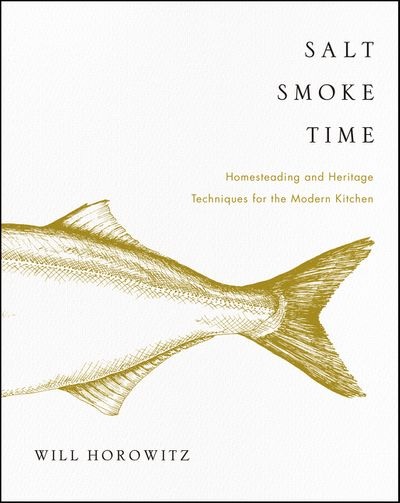 Herald the tail of scallop season with Smoked Sea Scallops with Shaved Pear and Spearmint from Will Horowitz's Salt, Smoke, Time (Morrow, $35). The restaurateur and homesteader also offers the recipe for his restaurant's Famous Smoked Beef Brisket (and Hot Willie's BBQ Sauce), if you have a smoker and a sense of adventure.
Herald the tail of scallop season with Smoked Sea Scallops with Shaved Pear and Spearmint from Will Horowitz's Salt, Smoke, Time (Morrow, $35). The restaurateur and homesteader also offers the recipe for his restaurant's Famous Smoked Beef Brisket (and Hot Willie's BBQ Sauce), if you have a smoker and a sense of adventure. You can even cozy-up your salads, with Kat Mead's Big Salads (Quadrille Publishing, $24.99), abundant with substantial, seasonal recipes. Mead writes, "When we have people over we can often fall into the trap of thinking we need to show off lots of fiddly dishes.... but what if it could be simpler?" Her answer: one big salad for everyone. Try the subtle, nutty Warm Pear, Mushroom and Ricotta Salad, the spicy Korean Glass Noodle-inspired salad or the Freekeh and Chickpea Salad with Pulled Harissa Lamb--Middle Eastern flavors to warm you from the inside out. --Katie Weed, freelance writer and reviewer
You can even cozy-up your salads, with Kat Mead's Big Salads (Quadrille Publishing, $24.99), abundant with substantial, seasonal recipes. Mead writes, "When we have people over we can often fall into the trap of thinking we need to show off lots of fiddly dishes.... but what if it could be simpler?" Her answer: one big salad for everyone. Try the subtle, nutty Warm Pear, Mushroom and Ricotta Salad, the spicy Korean Glass Noodle-inspired salad or the Freekeh and Chickpea Salad with Pulled Harissa Lamb--Middle Eastern flavors to warm you from the inside out. --Katie Weed, freelance writer and reviewer





 Lee: We were all weird kids. I think that's why we're writers now.
Lee: We were all weird kids. I think that's why we're writers now. Stine: I'm having fun doing something different. It's a lot like script writing, which I've done. I'm not good at description. I don't have the writer's eye for describing things. When you write a comic book, you don't have to describe much. It's all dialogue. You can give art direction and say, "You flew across the room," then the artist has to figure out what the room looks like. It's kind of a pleasure for me to mostly write dialogue.
Stine: I'm having fun doing something different. It's a lot like script writing, which I've done. I'm not good at description. I don't have the writer's eye for describing things. When you write a comic book, you don't have to describe much. It's all dialogue. You can give art direction and say, "You flew across the room," then the artist has to figure out what the room looks like. It's kind of a pleasure for me to mostly write dialogue.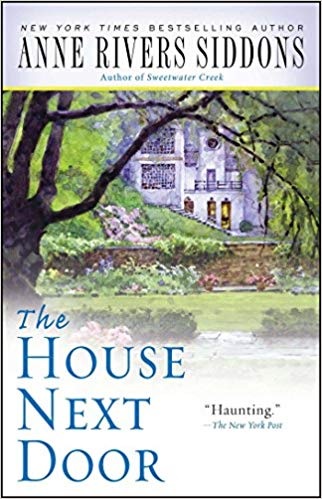 Anne Rivers Siddons, who was part of a post-civil-rights-era generation of Southern writers who helped define the literary New South,
Anne Rivers Siddons, who was part of a post-civil-rights-era generation of Southern writers who helped define the literary New South, 